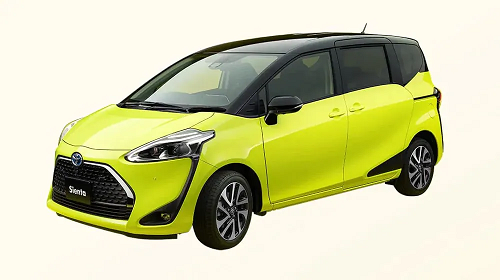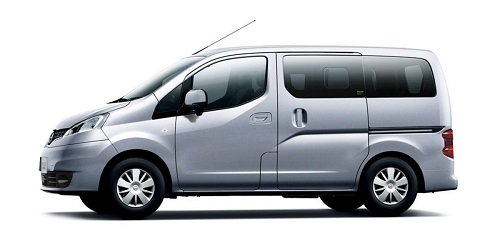The price of gasoline is not always constant and changes according to social conditions. It’s not uncommon for prices to suddenly rise, so it’s natural to want to choose a car that is as fuel-efficient as possible. This is especially true if you live in an area where cars are essential to your daily life, and if you use your car frequently.
Therefore, when choosing a car, it is important to check the catalog fuel consumption and actual fuel consumption, and choose a car with satisfactory fuel consumption performance. Here, we will introduce the fuel efficiency performance of the Nissan “NV200 Vanette Wagon”.
- NV200 Vanette Wagon WLTC mode catalog fuel consumption is 12.0km/L, actual fuel consumption is 9.2km/L
- Drive system is 2WD only
- Inferior to the fuel efficiency of rival cars Toyota “Sienta” and Honda “Freed”
Characteristics of fuel efficiency performance of NV200 Vanette Wagon
The engine of the NV200 Vanette Wagon is lightweight and has excellent quietness, and in addition to realizing light driving even with heavy loads, it is characterized by achieving both fuel efficiency. In addition , it is combined with a full-range electronically controlled 4-speed AT that improves electric power efficiency and contributes to improved fuel efficiency, giving consideration to environmental performance and fuel efficiency.
However, the NV200 Vanette Wagon was launched in May 2009, and since its basic design is old, it does not have the fuel efficiency measures that are installed in the latest models. The current situation is that we do not.
NV200 vanette wagon catalog fuel economy
The powertrain of the NV200 Vanette Wagon is a 1.6L in-line 4-cylinder gasoline engine that delivers a maximum output of 109PS and a maximum torque of 152N・m, combined with a 4AT transmission and a 2WD drive system only.
There is no 5MT or 4WD setting found in the commercial model van that the NV200 Vanette Wagon is based on.
The WLTC mode catalog fuel consumption of the NV200 Vanette Wagon is as follows.
| grade | Drive system | Fuel consumption (km/L) |
|---|---|---|
| 16X-2R | 2WD | 12.0 |
| 16X-3R | 2WD | 12.0 |
Actual fuel consumption of NV200 vanette wagon
According to the site ” e Fuel Economy “, which collects the actual fuel consumption data of owners riding the NV200 Vanette Wagon, the actual fuel consumption of the NV200 Vanette Wagon (as of June 26, 2021) is 9.2km / L for all grades . .
WLTC mode fuel consumption was measured in three modes: city mode, which is affected by traffic lights and traffic jams, suburban mode, which is less affected by traffic lights and traffic jams, and highway mode, which assumes driving on highways. It is a fuel consumption measurement method used not only in Japan but also internationally. As a catalog spec, it tends to be lower than the JC08 mode fuel consumption that has been used conventionally in Japan.
WLTC mode fuel consumption is measured by a method that is closer to the actual usage environment of the car, but it does not mean that there is no difference from the actual fuel consumption. It seems that there are many. Considering that point, you can see that the difference between the catalog fuel consumption of the NV200 Vanette Wagon and the actual fuel consumption is larger than the average value.
Compare the catalog fuel efficiency of the NV200 Vanette Wagon and rival vehicles
Toyota “Sienta ” and Honda “Freed” are the rival cars of the NV200 Vanette Wagon . Here, let’s compare the catalog fuel efficiency of these two models and the NV200 Vanette Wagon.
Toyota “Sienta”
 Source: Toyota “Sienta” gallery
Source: Toyota “Sienta” gallery
In addition to its ease of handling and usability, the Toyota “Sienta” has gained popularity for its unique exterior design inspired by trekking shoes .
Sienta’s WLTC mode catalog fuel efficiency is as follows. In addition to the 7-seat 3-row seat car, the Sienta has a 5-seat 2-row seat car “FUNBASE”, but there is no difference in fuel efficiency depending on the passenger capacity.
| grade | Drive system | Fuel consumption (km/L) |
|---|---|---|
| X/G/G Cuero (gasoline) | 2WD | 17.0 |
| 4WD | 14.0 | |
| X/G/G Cuero (Hybrid) | 2WD | 22.8 |
Comparing the fuel consumption of the Sienta’s 2WD vehicle and the NV200 Vanette Wagon shows that the Sienta’s fuel economy is advantageous.
Honda “Freed”
 Source: Honda “Freed” design color
Source: Honda “Freed” design color
The Honda “Freed” , a hit model synonymous with compact minivans, has a unique lineup of standard models with a friendly style, “CROSSTAR” with a crossover taste, and “Modulo X” with a sporty look. It’s a charm.
Freed’s WLTC mode catalog fuel economy is as follows. The Freed also has a 2-row “Freed +” setting in addition to a 3-row seat car, but there is no change in fuel efficiency like the Sienta.
| grade | Drive system | Fuel consumption (km/L) |
|---|---|---|
| B.Honda SENSING | 2WD | 17.0 |
| G-Honda SENSING | 2WD | 17.0 |
| 4WD | 15.6 | |
| CROSSTAR・Honda SENSING | 2WD | 17.0 |
| 4WD | 15.6 | |
| HYBRID G Honda SENSING | 2WD | 20.8 |
| 4WD | 19.8 | |
| HYBRID CROSSTAR・Honda SENSING | 2WD | 20.8 |
| 4WD | 19.8 |
The NV200 Vanette Wagon is also behind the Freed in terms of fuel efficiency.
Driving performance and ride comfort of the NV200 Vanette Wagon
 Source: Nissan “NV200 Vanette Wagon” appearance and design
Source: Nissan “NV200 Vanette Wagon” appearance and design
Since the NV200 Vanette Wagon is based on a commercial van that is supposed to carry a lot of luggage, it uses a leaf rigid rear suspension that can withstand high loads.
The front uses a ripple control shock absorber that suppresses unpleasant vibrations transmitted from the road surface and improves comfort. It offers both driving stability and a comfortable ride .
In addition, since the minimum turning radius is maintained at 5.2m, it is easy to maneuver even in narrow alleys with a small turning radius.
The NV200 Vanette Wagon has the appeal of a commercial base model that emphasizes loadability.
Since the NV200 Vanette Wagon is a model based on a commercial vehicle, I get the impression that the hospitality function and fuel efficiency performance are moderately focused on loadability.
Although it lags behind its rivals in terms of fuel efficiency, it has much higher loading capacity, so it is perfect for those who want to lead an active car life, such as outdoors and camping.
Frequently Asked Questions
Q1: What is the catalog fuel consumption of the NV200 Vanette Wagon?
A: The NV200 Vanette Wagon’s powertrain is a combination of a 1.6L in-line 4-cylinder gasoline engine and a 4-speed AT, and the drive system is 2WD only. There is no setting for hybrid vehicles. The WLTC mode catalog fuel consumption of the NV200 Vanette Wagon is 12.0km/L.
Q2: What is the difference between the catalog fuel consumption of the NV200 Vanette Wagon and the actual fuel consumption?
A: The actual fuel consumption of the NV200 Vanette Wagon is 9.2km/L. The WLTC mode measures fuel consumption in three modes that are close to the actual driving environment, so it is said that the value closer to the actual fuel consumption than the JC08 mode, which has been used in Japan, is still about 10 to 1.5%. It is common that there is a difference of Considering that point, it can be said that the difference between the catalog fuel consumption of the NV200 Vanette Wagon and the actual fuel consumption is larger than the average value.
Q3: How do you compare the catalog fuel economy of the NV200 Vanette Wagon and rival cars?
A: The NV200 Vanette Wagon’s rival cars include the Toyota “Sienta” and Honda “Freed”, but the catalog fuel efficiency of the NV200 Vanette Wagon lags behind both of these two models.
Q4: What is the driving performance and ride comfort of the NV200 Vanette Wagon?
A: The front uses a ripple control shock absorber that suppresses unpleasant impacts, and the rear suspension uses a leaf rigid type that can withstand a large load, achieving both steering stability and a comfortable ride.










